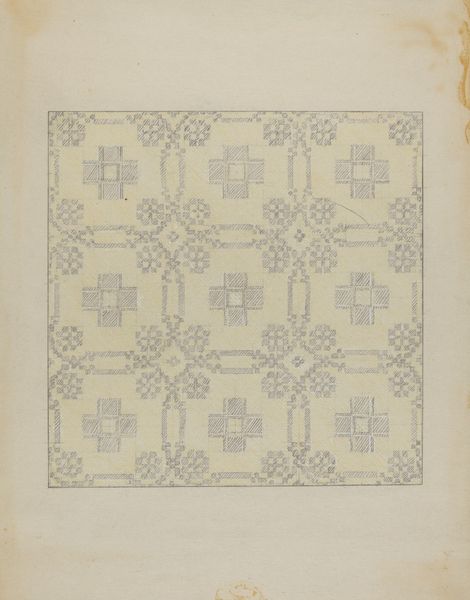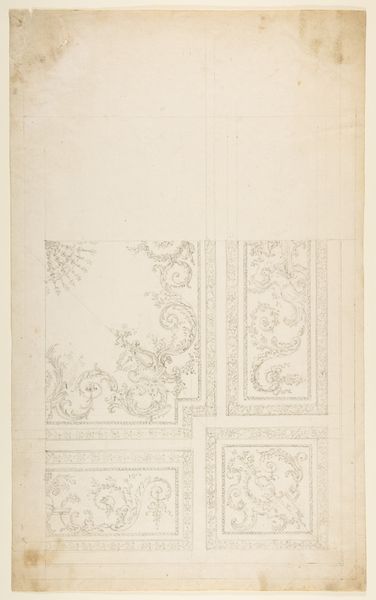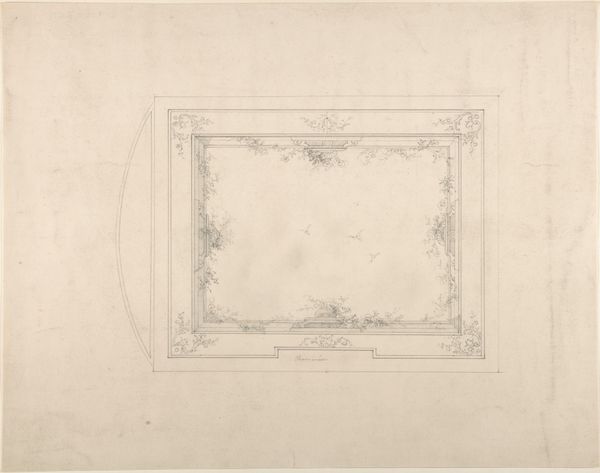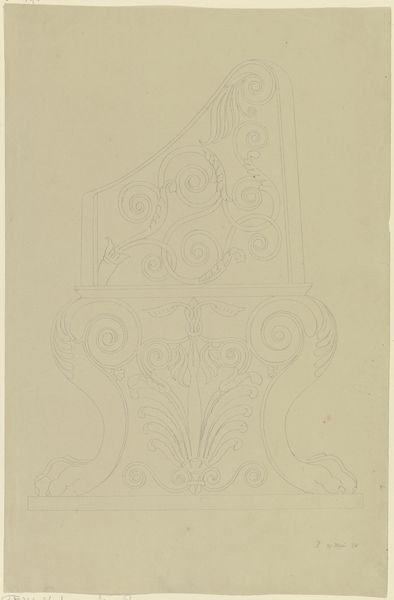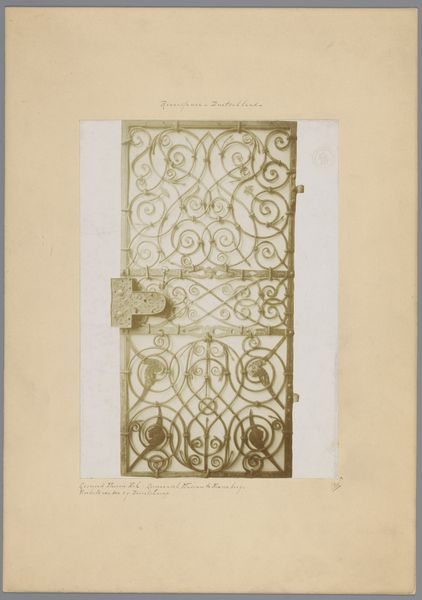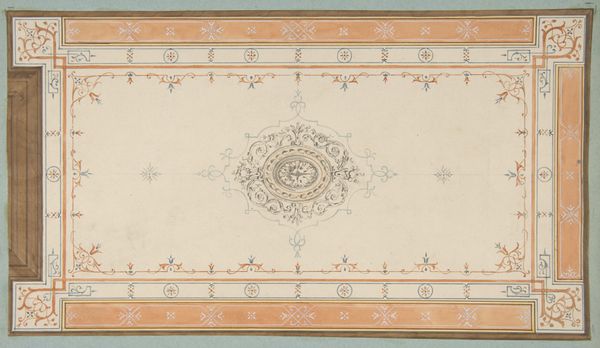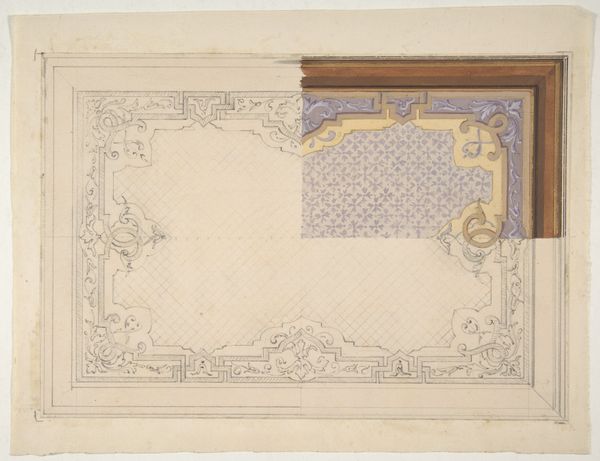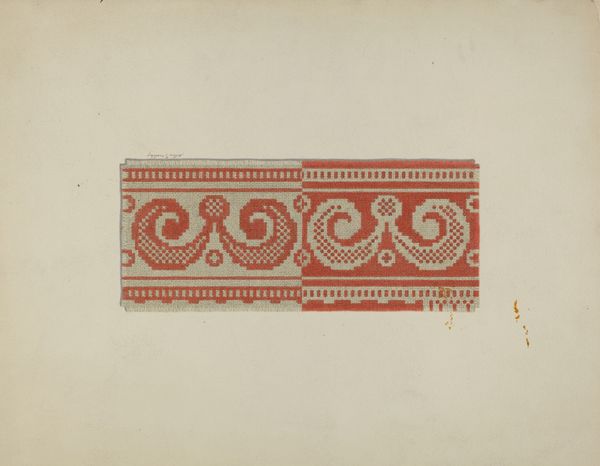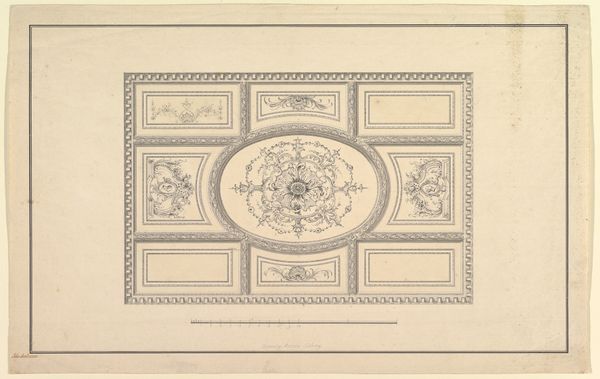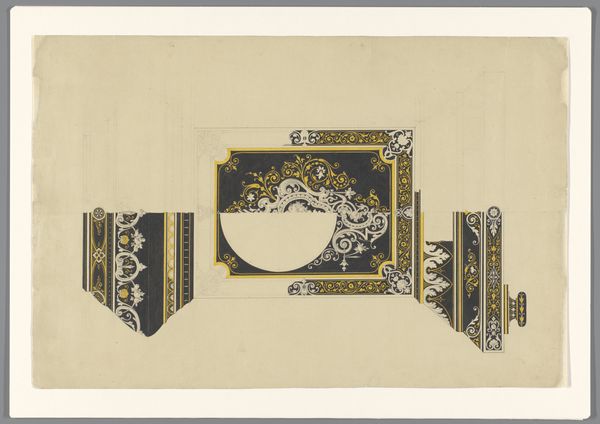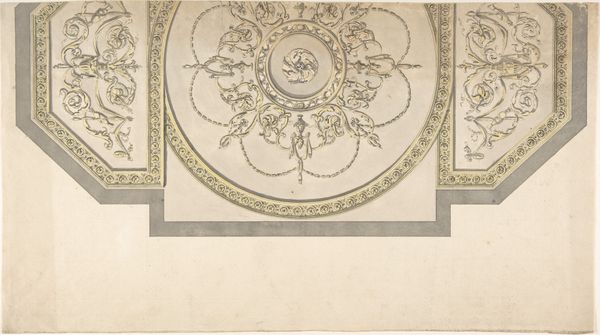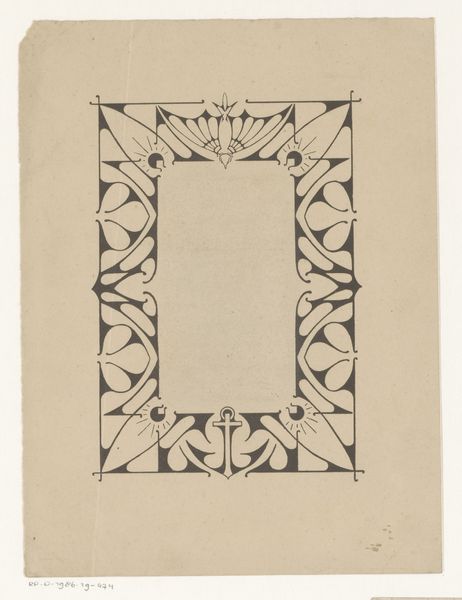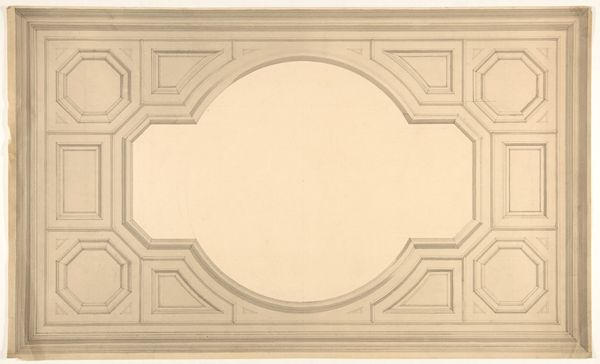
drawing, ornament, ink, pencil, architecture
#
pencil drawn
#
drawing
#
ornament
#
16_19th-century
#
neoclassicism
#
form
#
ink
#
geometric
#
pencil
#
line
#
architecture
Copyright: Public Domain
Victor Müller’s study at the Städel Museum shows floating and music-making putti within an ornamental frame. The putto—a cherubic, winged child—harkens back to ancient Cupid or Eros, embodying love and desire. Yet, here, they appear domesticated, Christianized, transformed into symbols of heavenly harmony. These figures, however, are not merely innocent decorations. Think of the Dionysian revels, where similar figures danced in ecstatic abandon. Consider how the image of the child has been a vessel for profound, often conflicting, emotions throughout history. From the sacred images of the Madonna and Child to the unsettling figures in folk rituals, the child embodies both innocence and a primal, untamed energy. These cherubic figures, forever suspended in their ornamental frame, invite us to contemplate the complex interplay between cultural memory and the subconscious, revealing the cyclical nature of symbols and their enduring power to move us.
Comments
No comments
Be the first to comment and join the conversation on the ultimate creative platform.
